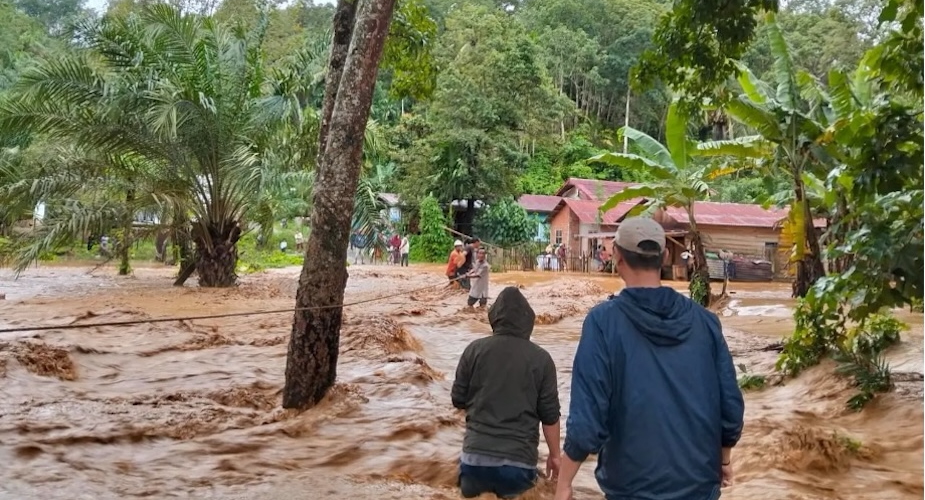What next for Indonesia’s underwater cultural heritage?
Natali Pearson
Thirty years since the Geldermalsen cargo was sold off, Indonesia’s underwater cultural heritage legislation remains inconsistent and ambiguous, with serious implications for its many shipwrecks.
The Indonesian archipelago is the final resting place for at least 400 known shipwrecks. The diverse wrecks constitute a snapshot of Indonesia’s rich histories: ancient dhows that plied the maritime ceramic route between the Middle East and China, Dutch East Indiamen laden with tea and spices, watery World War II graves, and crowded ferry disasters of the present day. Scholars speculate that many more remain undiscovered, or at least unreported.
Indonesia’s underwater cultural heritage has not received the same attention as land-based heritage sites such as Borobudur and Prambanan, despite the variety and historical significance of many of these wrecks. At best, shipwrecks are considered to be commercial excavation opportunities or diving sites; at worst, they are places for amateur souveniring or semi-professional salvaging.
Yet Indonesia is aware of the significance of its underwater cultural heritage – and the inadequacy of its legislative framework – for at least three decades.
The £10 million teapot
One of the most prominent examples of the destruction of Indonesia’s underwater cultural heritage was the 1986 auction of objects removed from the Geldermalsen wreck. The Geldermalsen was a Dutch East India Trading Company cargo vessel that sank near Riau, south of Singapore, in 1752. In the mid-1980s, British treasure hunter Michael Hatcher salvaged the vessel for profit, saving only valuable objects and destroying what was left. Although Hatcher had a contract with the Dutch Government to excavate the wreck, it is clear that there were other interests deserving of attention. In his own words, ‘…it was a race to get what [we] could before being interrupted by weather, rivals, pirates, or some government.’
A small spouted jar containing star anise, 1999 - Credit: Michael Flecker
The salvage process has been likened to swimming in a gigantic teapot. The Geldermalsen’s most precious cargo, at least at the time of its sinking, was not gold and porcelain, but tea. In 1986, the salvaged porcelain and gold was auctioned by Christie’s in Amsterdam for more than £10 million.
Notably, it was auctioned as the ‘Nanking’ cargo, even though the wreck was in Indonesian waters. Furthermore, Indonesia received nothing from the sale proceeds.
Protecting treasure by selling it
Hatcher’s actions revealed the vacuum that existed in relation to the ownership and management of underwater cultural heritage in Indonesia. As a result, legislation was introduced in 1989 that formalised state ownership of all wrecks in Indonesian waters. It also established the National Committee for Salvage and Utilisation of Valuable Cargo Objects from Sunken Ships (PanNas BMKT), which was authorised to issue commercial excavation permits to third parties through an Indonesian licensee. The consequence of this legislation was that ships and their cargoes were constituted primarily as economic, rather than historical, resources – resources that now belonged to the state.
Poor visibility limits clear photos of HMAS Perth., 2014 - Credit: Shinatria Adhityatama / Pusat Arkaeologi Nasional (Arkenas)
In 1992, Indonesia introduced new cultural heritage legislation (Law No. 5/1992). It provided for objects of historical and cultural significance, but did not directly address the issue of underwater sites and objects. This law did not replace the 1989 legislation, but operated alongside it.
It is within this context that numerous wrecks were excavated by companies such as Seabed Explorations. Some, such as the fifteenth century Bakau wreck, were already extensively looted at the time of excavation. Others, however, such as the Belitung (Tang) wreck, have yielded numerous commercially-valuable objects. This ninth century ship, which was carrying thousands of Tang dynasty ceramics, is believed to have sunk on its return journey to the Middle East. The cargo was excavated by Seabed Explorations, and, after conservation, sold to Singapore for US$32 million. Select objects are on permanent display at the Asian Civilisations Museum.
Valuing the past
However, the activities of Seabed Explorations and other such commercial excavation companies operating in Indonesia are currently on hold. In 2010, the same year as new heritage legislation (Act No. 11/2010) was introduced, Indonesia placed a five-year moratorium on the issuing of all new licences to commercial excavation companies. Legislative revisions have not yet passed, even though the time limit on this moratorium has lapsed. This delay can be attributed to differences of opinion within the Indonesian government about the management of underwater cultural heritage.
The Tang Shipwreck Collection on display at the Asian Civilisations Museum, 2015 - Credit: Asian Civilisations Museum
A commitment to the protection and preservation of these sites could be achieved by signing the 2001 UNESCO Convention on the Protection of the Underwater Cultural Heritage. The Convention preferences in situ preservation of wrecks, and bans commercial excavation. However, it is unlikely that Indonesia will consider this as an option, due to the resource burden it places on countries.
It is more likely that Indonesia will manage its underwater cultural heritage through the introduction, or revision, of domestic legislation. The ongoing legislative delays point to an unresolved tension within Indonesia about how its underwater cultural heritage should be valued – as a resource for exploitation, or as a cultural legacy worth protecting and preserving.
Natali Pearson (natali.pearson@sydney.edu.au)http://SEAsiaPasts.com).















